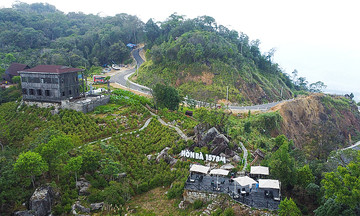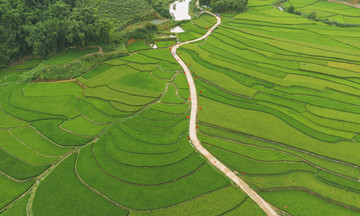Located in the heart of Kon Tum city, the former Kon Tum Provincial Museum, now the Quang Ngai Provincial Museum's second facility, not only preserves the material and spiritual life of the Central Highlands' ethnic groups but also serves as a fascinating destination for archaeologists.
According to Nguyen Van Quang, deputy director of the museum, 594 artifacts from the Lung Leng site are currently on display, dating from the Paleolithic period (20,000 to 30,000 years ago) to the late Neolithic and early Metal Age (3,000 to 4,000 years ago).
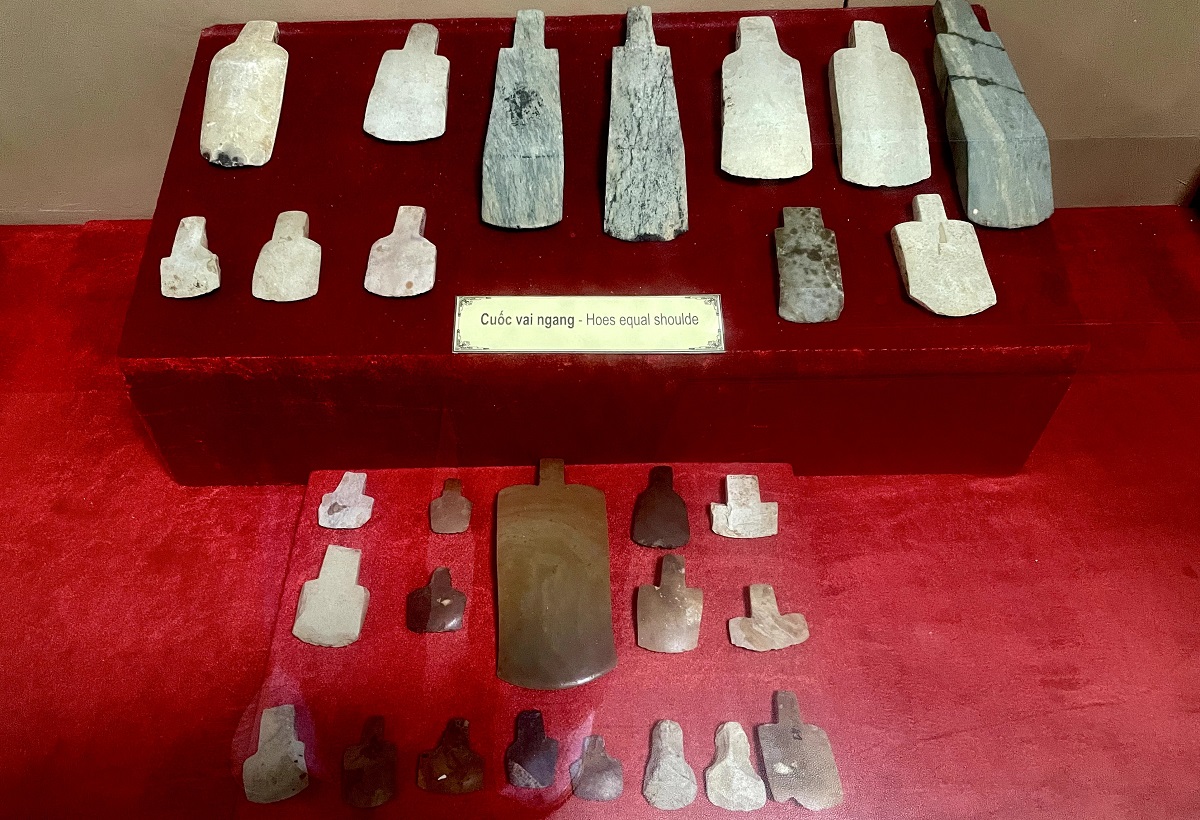 |
A shouldered adze from the Stone Age, excavated from Lung Leng village on the Po Ko River. Photo: Thao Vy |
The stone tools are categorized according to the developmental stages of manufacturing techniques. These range from roughly chipped tools of the Paleolithic period to those with ground blades from the Mesolithic period, and finally to fully ground artifacts like adzes, buffalo-tooth axes, and shouldered axes from the Neolithic period.
A significant portion of the collection comprises tools used for making stone tools, including grinding stones, hammerstones, pestles, stone saws, drill bits, wheel-shaped pebbles, flywheels, and axe molds, indicating on-site tool production.
The museum also houses numerous ceramic items used in daily life, such as bowls, plates, pots, lamp bases, pedestal bowls, jars, and vases, alongside jewelry crafted from stone, quartz, ochre, and ore.
Notably, a collection of jar and vase burials, along with accompanying artifacts, are displayed in simulated excavation pits, vividly illustrating the ancient burial customs of the region's inhabitants.
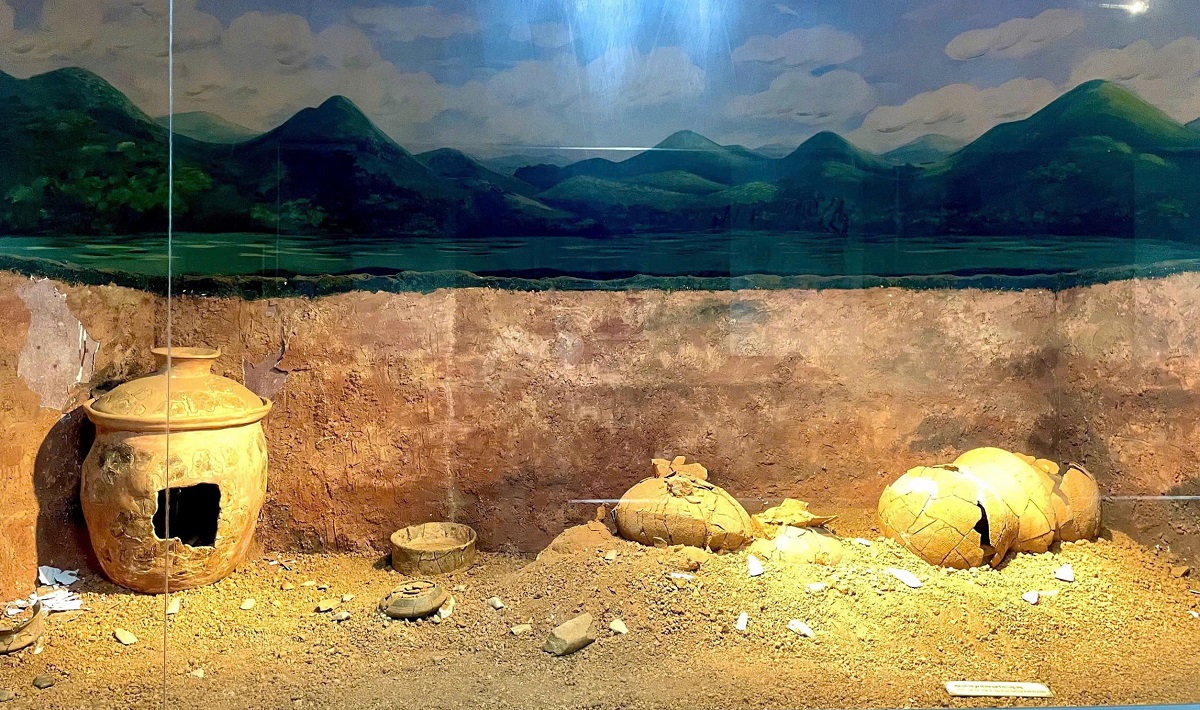 |
The museum displays a simulated excavation pit showcasing various tomb types and burial artifacts, reflecting the burial customs of prehistoric inhabitants excavated at Lung Leng. Photo: Thao Vy |
The Lung Leng archaeological site was discovered in the eponymous village on the banks of the Po Ko River. In the late 1990s, this section of the river attracted numerous gold miners. While seeking workers, employers discovered that villagers possessed many unusually shaped stone tools, like hammers and axes, and began purchasing them.
A turning point came in 1999 when Nguyen Ngoc Kim, a small trader, approached the Kon Tum Provincial Museum, offering to sell over 300 artifacts he had acquired from gold miners. These artifacts astonished the museum staff, who then dispatched personnel to the site and witnessed firsthand the traces of ancestors revealed from the earth.
That September, the Institute of Archaeology collaborated with the Kon Tum Department of Culture and Information to conduct the first excavation, covering over 100 m2. The archaeological team unearthed hundreds of stone and ceramic artifacts.
However, the entire site, spanning 15,000 m2, lay within the semi-submerged area of the IaLy hydroelectric reservoir. A large-scale excavation was necessary before the reservoir's filling in 2002 would completely submerge the site.
The Prime Minister subsequently ordered the emergency protection of the Lung Leng site. By mid-2001, a large-scale excavation commenced, involving over 40 specialists and more than 600 laborers. This time, the team uncovered and processed 20 relics, including fireplaces and kilns; 120 tombs; and 14,552 production tools such as axes, adzes, hoes, knives, grinding stones, milling stones, and bronze casting molds.
Additionally, jewelry, including bracelets, earrings, and necklaces, along with hundreds of ceramic pieces and shards, were also discovered.
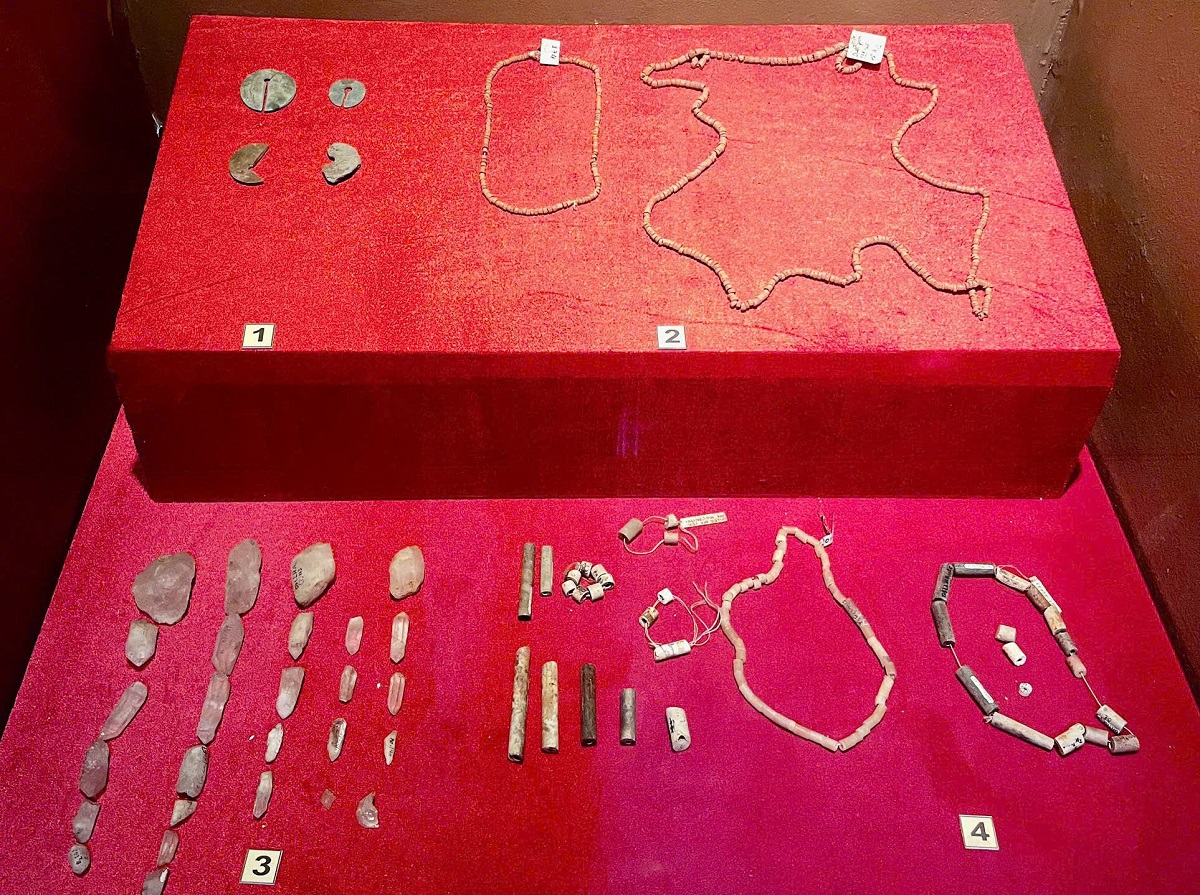 |
Earrings, necklaces, and quartz from the Lung Leng site. Photo: Thao Vy |
Professor Nguyen Khac Su, former head of the Stone Age Department at the Vietnam Institute of Archaeology, described Lung Leng as a particularly important prehistoric settlement. It served not only as a living space but also as an area for stone tool crafting, ceramic production, metallurgy, and a large burial ground. The site clearly demonstrates the transition through various periods, from the late Paleolithic (Pleistocene), late Neolithic, and early Bronze Age to the early Iron Age, and even includes traces of historical-period ceramics.
Professor Su believes that the findings at Lung Leng are not merely "silent relics" but vibrant messages from ancestors, helping to reconstruct the picture of prehistoric culture in the Central Highlands.
According to Professor Su, the prehistoric inhabitants of Lung Leng had extensive interactions with other ancient communities in Vietnam and Southeast Asia while retaining their own distinct cultural characteristics.
"It must be acknowledged that this was a dynamic and innovative region with extensive interactions. A deep understanding of the Central Highlands' past provides a realistic perspective for the strategic socioeconomic development of this region – a land of great potential for the nation", Professor Nguyen Khac Su wrote.
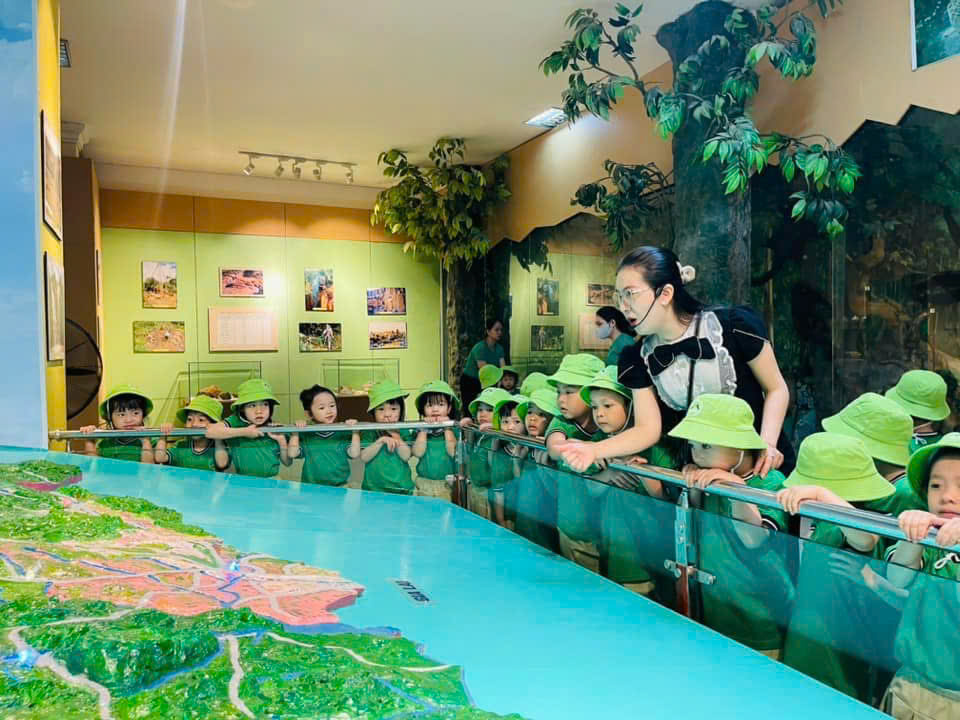 |
Children visiting the former Kon Tum Museum, now the Quang Ngai Museum's second facility. Photo: Thao Vy |
Nguyen Van Quang believes that the artifacts from the Lung Leng site, displayed at the museum, constitute a rich and vital source of material evidence, contributing to the study of prehistoric history and culture in Kon Tum and the surrounding area. In recent years, museum staff have regularly presented information about the Lung Leng site to students learning about local history.
Many visitors are also surprised by the artifacts from Lung Leng. "Contrary to the preconception of the Central Highlands as an isolated and closed-off region, visiting the museum revealed its early and vibrant development, leaving behind valuable artifacts that attest to the level of production here", said Quang Minh, a visitor from Quang Ngai.
Thao Vy



